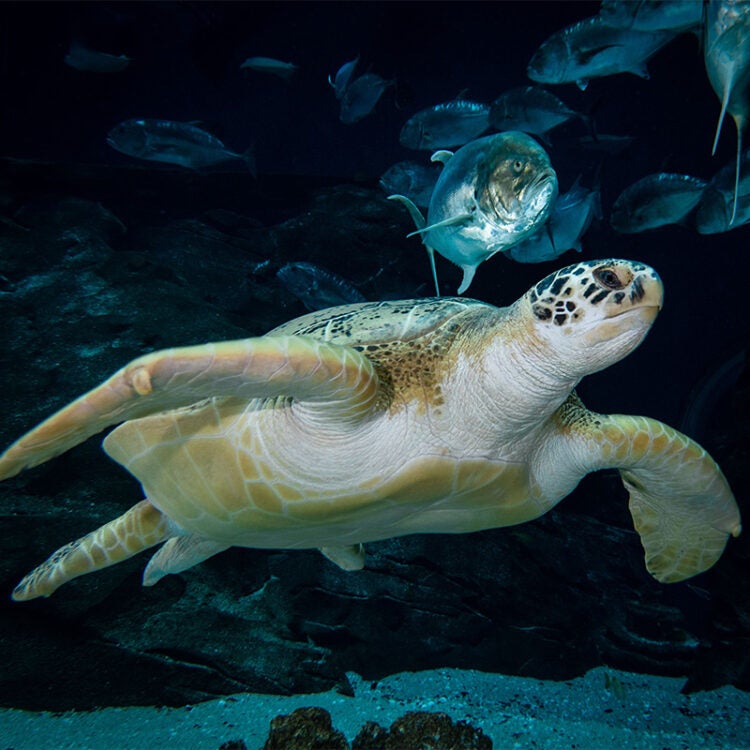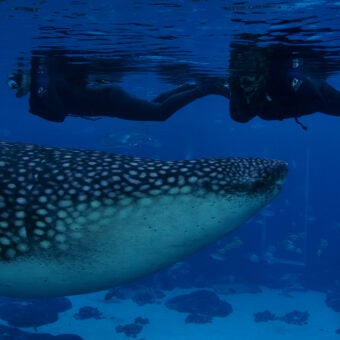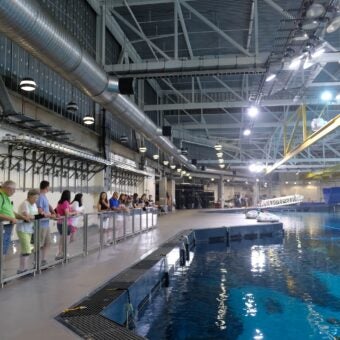-
Size
3 feet (1 m) and can weigh 300 to 500 lbs. (136-227 kg) -
Diet
Sea grasses and algae -
Range
Atlantic, Pacific and Indian Oceans, as well as the Mediterranean Sea -
Habitat
Tropical and subtropical waters
Physical Characteristics
- Averages in weight from 300 to 500 lbs. (136–227 kg) and reaches approximately 3 feet (1 m) in length.
- Hatchling is about 2 inches (5 cm) long and weighs 0.05 ounces (25 g).
- The carapace, or upper shell, of the green sea turtle is light to dark brown in color with a creamy underside or plastron. The carapace is often blotched or streaked with olive or other shades of brown. Its skin is cream to yellow in color.
- This turtle has a relatively small, rounded head.
- Unlike land turtles, a sea turtle is unable to tuck its head and legs into its shell, making it vulnerable to sharks, the sea turtle’s only natural predator
- Green sea turtle fat is greenish in color. Its vegetarian diet is believed to be the reason for this.
Animal Fun Fact
The green sea turtle is the largest species of hard-shelled sea turtle.
Diet / Feeding
- Diet consists of seagrasses and algae.
- This species is the only herbivorous sea turtle.
- Young turtle feeds on pelagic vegetation.
Range / Habitat
- Occurs all over the world in the Atlantic, Pacific and Indian Oceans, as well as the Mediterranean Sea.
- Found in tropical and subtropical waters, often in coastal areas and around remote ocean islands.
Reproduction & Growth
- The female turtle returns to the same beach (known as “natal beaches,”) every two to four years to make a nest and lay eggs.
- Nesting season varies by location but generally falls during the summer months.
- During nesting season, the female emerges from the water at night and drags her body up the beach to dig a nest for her eggs. Once she reaches an area on the beach well above the high water line or into the dune face, she digs a hole by scooping sand with her rear flippers. After depositing the eggs, she covers them with sand, smoothing the area with her body to disguise the location of the nest from predators such as raccoons. The Female then returns to the sea.
- Mating season in the southeastern U.S. is April through July, with turtles nesting in late June through early September.
- Typical clutch size commonly ranges anywhere between 75 to 200 eggs.
- Eggs incubate for approximately two months.
- Hatchling is active as soon as it breaks out of its egg. Emerges from the nest, after days of digging its way up through the sand, and makes its way to the ocean. During this period, the tiny turtle is vulnerable to ghost crabs, birds and other predators. Once in the water, the hatchling swims out to the nearest floating mass of sargassum weed and spends the first portion of its life there feeding, growing and drifting with the currents.
- “Lost years” is the period of time between hatching and the turtle’s return to coastal waters as a juvenile. The newly hatched turtle will often spend its first 3 to 7 years in floating mats of sargassum seaweed.
Conservation Status
- “Endangered” on the IUCN Red List.
Additional Information
- The term “green” in its name is due to the fact that the turtle’s subdermal fat is green.
- Of hard-shelled sea turtles, this species is the largest.
- Passes entire life in the ocean, save for hatching and nesting events.
- Spends much of its time floating at the ocean’s surface.
- Lifespan in human care averages 75 years.







